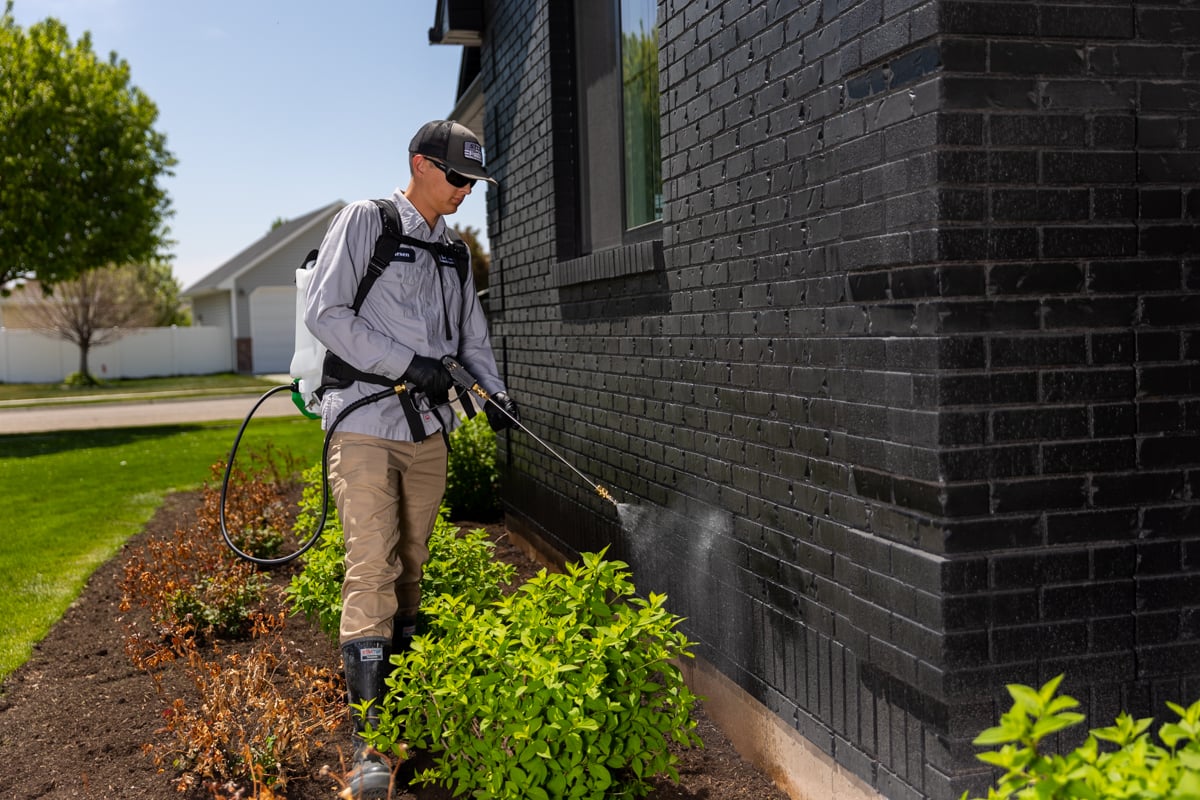Expert A1 Charlotte Bed Bug Exterminator - High Quality Service Ensured
Expert A1 Charlotte Bed Bug Exterminator - High Quality Service Ensured
Blog Article
Bed Bug Therapy Failure: Comparing Chemical Vs. Non-Chemical Solutions
In the world of bug control, especially when taking care of the consistent concern of bed bugs, the option in between chemical and non-chemical therapy solutions can be an essential one. Both strategies offer distinct advantages and disadvantages, affecting variables such as efficiency, safety considerations, and overall price. By taking a look at the nuanced details of each method, a clearer understanding of which course to pursue in attending to a bed insect invasion can be obtained.
Performance of Chemical Therapies
Chemical treatments for bed bug infestations have been extensively acknowledged for their rapid and powerful effectiveness in eradicating these parasites. When taking into consideration the performance of chemical therapies, it is essential to recognize that they can offer a quick and detailed remedy to a bed bug trouble.
Furthermore, chemical therapies have the advantage of using residual impacts, implying that they can proceed to eliminate bed pests even after the first application. This recurring action is particularly beneficial in combating any prospective re-infestations. Furthermore, the quick action of chemical therapies can bring relief to people facing extreme bed bug problems, allowing them to gain back control of their home quickly.
Security Worry About Chemical Solutions
One essential aspect that calls for cautious factor to consider when utilizing chemical options for bed pest treatment is making certain the security of owners and the environment. Exposure to certain chemicals utilized in bed pest therapies can lead to respiratory system issues, skin irritability, or other damaging reactions, particularly in people with pre-existing conditions or level of sensitivities.
Furthermore, the ecological effect of chemical solutions is an additional substantial factor to consider. Some chemicals utilized in bed bug treatments might be damaging to beneficial bugs, wild animals, and environments if they seep into the dirt or water supply. It is important to utilize chemical therapies judiciously, adhering to safety guidelines, and considering much less toxic choices to reduce these dangers and guarantee the secure and reliable management of bed insect invasions.
Advantages of Non-Chemical Methods
Considering the possible safety and security problems and ecological influence linked with chemical remedies for bed pest therapy, discovering non-chemical approaches provides a promising choice with a number of distinct advantages. Non-chemical treatments are ecologically friendly, as they do not contribute to air or water pollution, making them a lasting selection for pest control.
In addition, non-chemical services can be reliable in targeting bed bugs, consisting of hard-to-reach areas where chemical therapies may not permeate - A1 bed bug treatment in charlotte. Methods such as heat treatment, vacuuming, heavy steam cleaning, and cushion coverings provide thorough obliteration without the use of unsafe chemicals.
Limitations of Non-Chemical Treatments

Additionally, non-chemical therapies commonly need numerous applications to attain effective obliteration. This can be taxing and might not always guarantee full removal of all bed pests and their eggs, specifically in surprise or hard-to-reach places.
In addition, the success of non-chemical treatments greatly depends on appropriate execution and thoroughness, which can be challenging for people without expert competence. Inadequate find out here application of non-chemical approaches might cause incomplete obliteration, leading to persistent infestations and the requirement for extra treatments.
For that reason, while non-chemical treatments have their advantages, it is vital to acknowledge these limitations and consider them when establishing one of the most effective technique for taking care of bed bug invasions.
Expense Contrast: Chemical Vs. Non-Chemical Options
Given the limitations associated with non-chemical treatments, a vital aspect to evaluate in the context of bed insect monitoring is the expense contrast between chemical and non-chemical options. In contrast, non-chemical treatments like warm treatment or heavy steam can be extra costly, with expenses ranging from $1,000 to $6,000 for a whole home. While the initial expense of chemical therapies may appear reduced, multiple treatments might be called for to completely eliminate the problem, possibly increasing the general cost.
Conclusion

Taking into consideration the prospective security concerns and environmental impact linked with chemical solutions for bed insect treatment, exploring non-chemical techniques offers an encouraging alternative with numerous distinctive advantages.Given the restrictions associated with non-chemical treatments, a vital facet to examine in the context of bed insect monitoring is the expense contrast between chemical and non-chemical choices. In comparison, non-chemical treatments like warm therapy or heavy steam can be extra costly, with prices varying from $1,000 to $6,000 for a whole home. While the preliminary expense of chemical treatments might appear reduced, numerous therapies might be called for to completely get rid of the problem, potentially raising the overall price.In final thought, when comparing chemical and non-chemical bed insect therapy choices, it is essential to take into consideration effectiveness, safety helpful site and security, benefits, limitations, and price.
Report this page